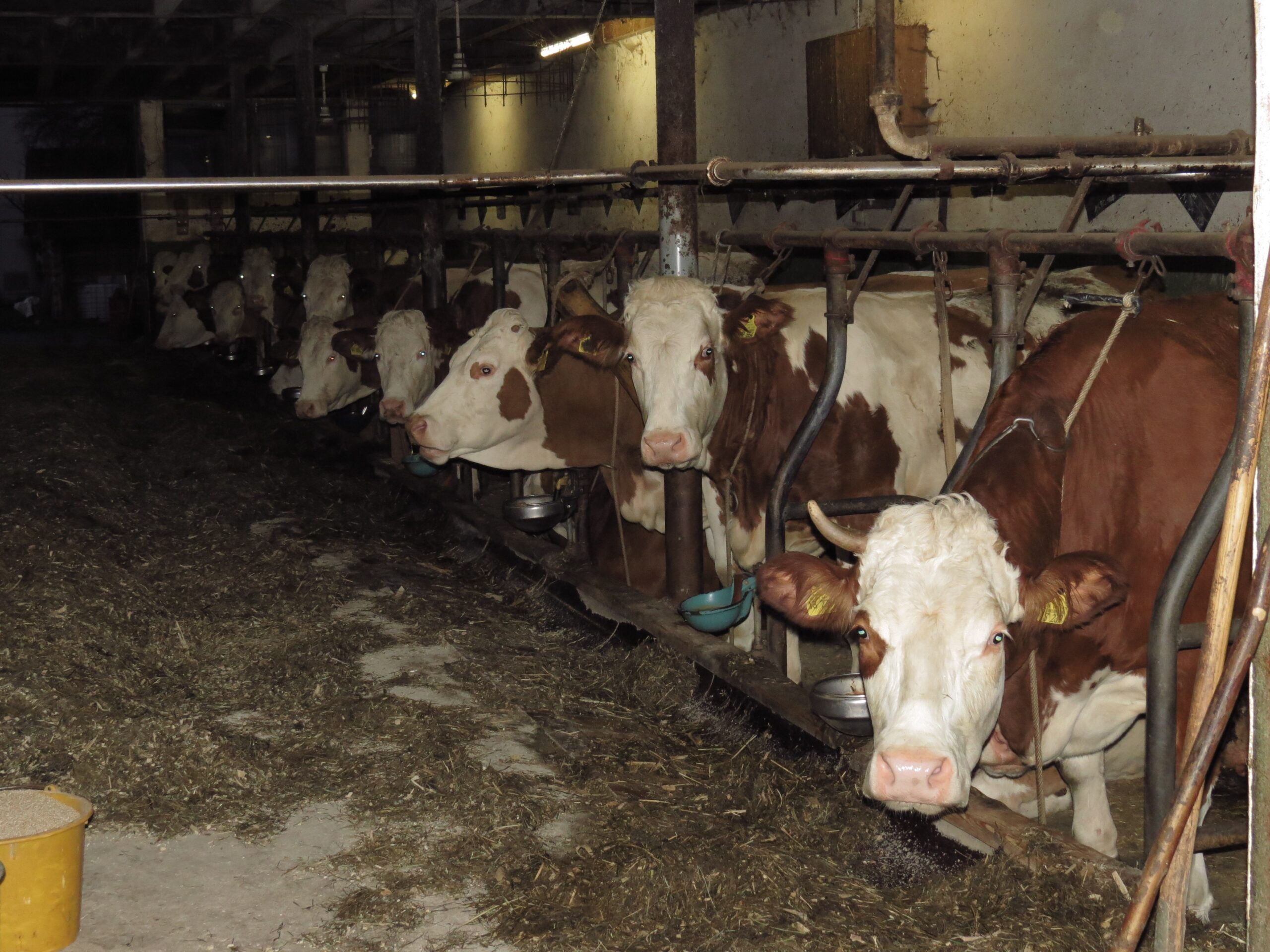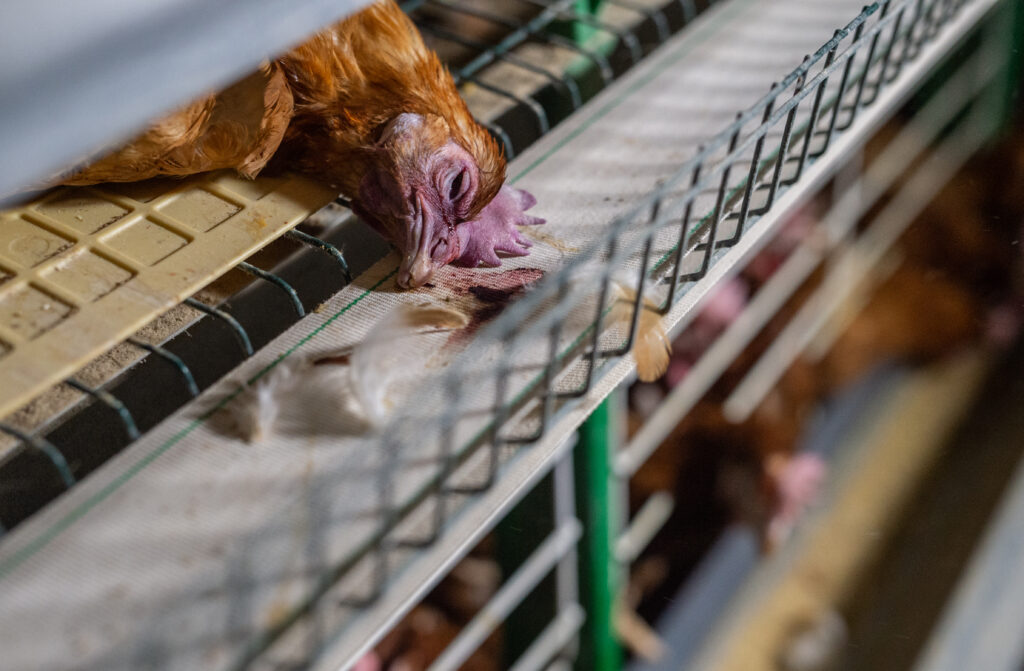Living vegetarian is well-intended, but it still supports animal exploitation.
Awareness of animal rights has increased in recent years, and many people choose a vegetarian lifestyle for ethical reasons. However, avoiding meat alone is not enough to significantly reduce the massive scale of animal suffering – if at all. Only a vegan lifestyle ends animal exploitation.

Dairy industry
- Cows are not magical milk machines. They only produce milk under the same circumstances as humans: when they give birth. That’s why they are – in most cases artificially and not naturally – impregnated by humans. The milk is actually meant to feed their calves. But…
- In most cases, dairy cows have their calves taken away from them immediately after birth so that the milk can be used for humans instead of being consumed by the calves, for whom it was originally intended. The mother cow suffers and mourns the loss of her child. This process is repeated multiple times throughout a dairy cow’s life to maintain milk production.
- Additionally, dairy cows have been selectively bred to produce as much milk as possible. This has severe physical consequences: some cows’ udders become so large and heavy that they can barely walk properly.
- What happens to the calf?
- Female calves suffer the same fate as their mothers. Male calves, since they cannot produce milk, are slaughtered for veal.
- Because the animal industry is driven by profit, dairy cows that no longer produce enough milk and are no longer profitable are slaughtered and sold as cheap meat. It is not uncommon for a pregnant cow to be slaughtered, or for her to give birth to her calf during transport or in the slaughterhouse.
- The dairy and meat industries are connected.
- If you avoid eating meat to protect animals but still consume dairy products, these animals still suffer and die just the same.
- Want to learn more about dairy cows? Our research is based on the comprehensive report on dairy cows by the Albert Schweitzer Foundation for Our World.

Egg industry
- The more eggs a hen lays, the more profitable she is. That’s why humans have overbred them to the point where they now lay 300 eggs per year instead of a maximum of around 40, like their ancestors did.
- Typically, hens are kept for a laying period of 12 to 15 months, during which they are pushed to their maximum egg-laying capacity. After this period, their egg production usually declines, and keeping them alive is no longer profitable. That’s why “spent” hens are replaced by young hens in a continuous cycle.
- Once hens lay too few or no eggs at all, their only economic value lies in their meat. As a result, they are slaughtered and sold as “soup chickens” or used as food for dogs and cats.
- In the egg industry, the meat of hens—and thus their killing—is merely a byproduct.
- Want to learn more about laying hens? Our research is based on the comprehensive report on laying hens by the Albert Schweitzer Foundation for Our World.